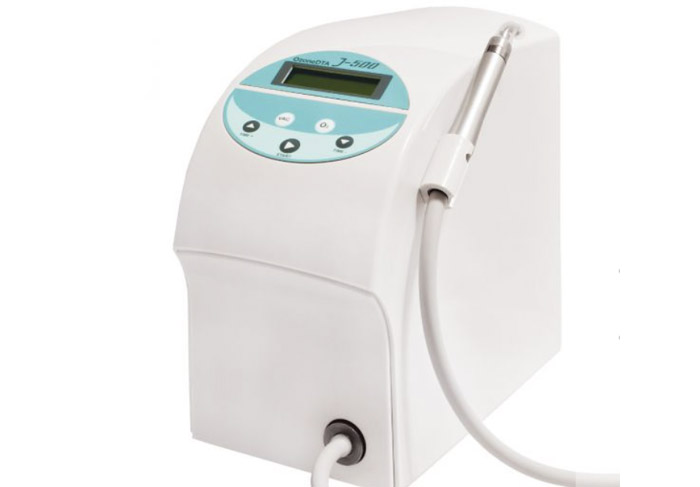Ozone
Ozone

Ozone in biological dentistry
Ozone is often used in biological dentistry to reliably disinfect open wounds in the oral cavity. The triatomic, gaseous oxygen molecule is not only effective against bacteria, but also eliminates viruses and fungi.
However, it does not attack the body’s own cells, which makes ozone a particularly gentle wound disinfectant. Thanks to its good disinfection and cleansing properties, it is also able to accelerate wound healing.
Organic dental practice and ozone
When is ozone used in an organic dental practice?
Ozone is always used profitably in an organic dental practice when thorough and at the same time gentle disinfection of a wound area is required:
- during surgical procedures such as tooth removal or implant placement
- for bone augmentation
- NICO treatment, i.e. the removal of inflamed tissue in the jawbone
It is often possible to significantly reduce the amount of antibiotics required for such dental procedures, which in turn is gentle on the patient.
How exactly does the use of ozone in bio dentistry work?
The dentist uses a special ozone device to produce ozone, which can be used locally at the desired point in the oral cavity. An electrical voltage is generated on an ozone pipette, which stimulates blood flow to the tissue. This results in disinfection; fungi, viruses and bacteria die. This allows the wound to heal optimally.
To achieve an even better result, organic dentists like to use methods such as the Choukron A-PRF™ membrane or concentrated nutrients at the same time. Ask your bio dental practice for advice on this.
